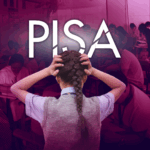The integration of Artificial Intelligence (AI) in Philippine education presents a promising yet complex opportunity to modernize teaching and learning.
With initiatives like the Department of Education’s partnerships with technology leaders such as Microsoft, AI is utilized to enhance personalized learning, streamline administrative tasks, and improve educational access, particularly in underserved areas.
However, the success of AI integration depends heavily on addressing challenges, including limited infrastructure, the digital divide, and ethical use.
Blueprint for educational success
The Department of Education (DepEd), in collaboration with Microsoft, is integrating artificial intelligence (AI) into public education, streamlining classroom instruction and administrative tasks.
Anchored in the Presidential Digitalization Blueprint, the initiative deploys Microsoft M365 Copilot to automate lesson planning, paperwork, and other clerical duties, allowing educators to focus on pedagogy.
Through AI immersion programs, teachers across the country are gradually embedding AI-driven tools into their instruction, promising a more accessible and interactive learning experience.
Yet beyond mere automation, the partnership underscores the growing push for AI literacy, ensuring that Filipino students are not just passive users but active participants in an increasingly digital world.
Schools leading the AI shift
AI integration in DepEd schools has streamlined both teaching and administrative tasks, benefiting thousands of educators and students.
Reports from the Microsoft Copilot Classroom Hack activity stipulated that in Bais City, Dumaguete, the adoption of Reading Progress assessed 14,000 learners across 65 schools, cutting reading evaluation time from two days to two hours and improving literacy within three months.
Meanwhile, across eight DepEd regions, teachers participating in the Microsoft Copilot Classroom Hack saved an average of nine hours per week, with some reducing workloads by up to 20 hours through AI automation.
Transformative benefits of AI
According to Joseph Arnold Labaguis, a Grade 10 Teacher attendee from Marinduque National High School, the integration of AI in education is not merely an “upgrade”—it is a structural shift in how learning and teaching unfold in classrooms.
By automating lesson planning, grading, and attendance tracking, AI allows educators to prioritize student engagement over clerical work.
Tools like Reading Progress and Reading Coach provide real-time insights into student performance, improving literacy and comprehension without the bottleneck of manual assessments.
Beyond efficiency, AI initiatives also aim to bridge the digital divide, ensuring that both students and educators nationwide gain access to transformative technology.
More than just users, teachers and students are being equipped with AI fluency, preparing them for the demands of an increasingly digital economy.








